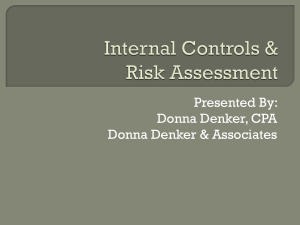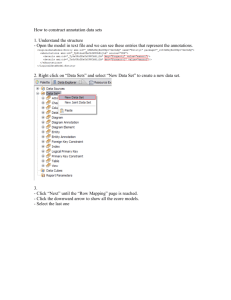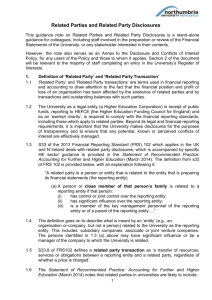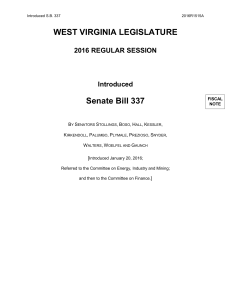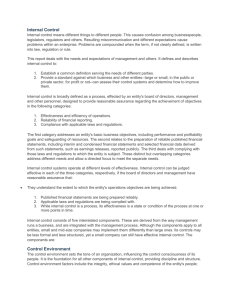Components of the Internal Controls Process
advertisement
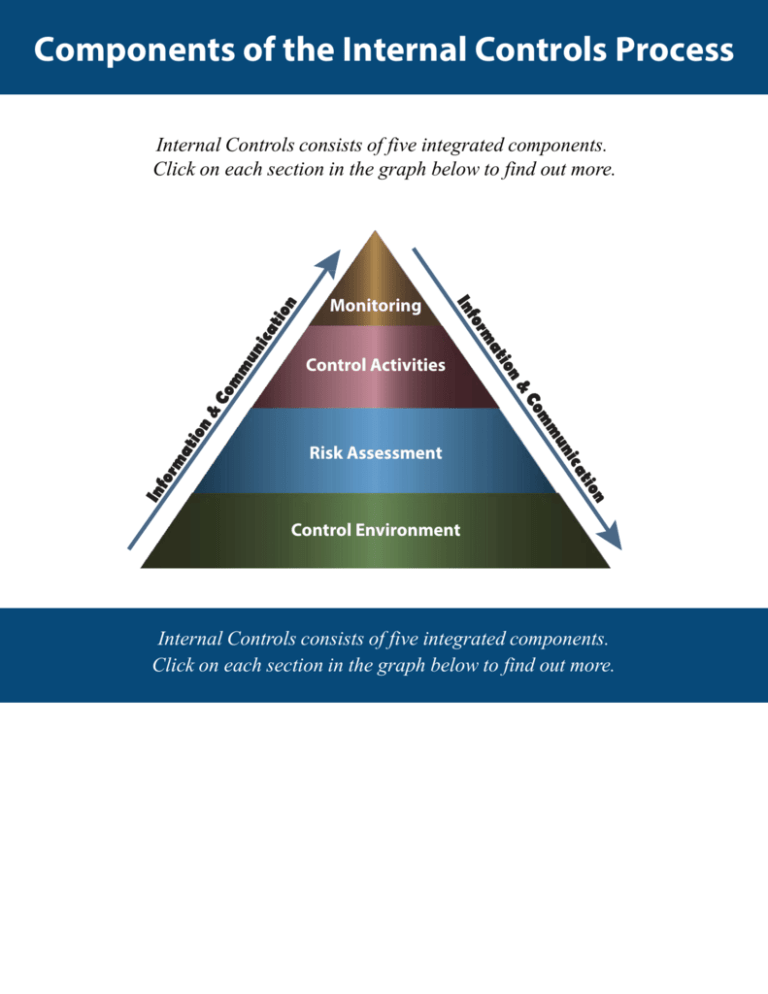
Components of the Internal Controls Process Internal Controls consists of five integrated components. Click on each section in the graph below to find out more. Monitoring Control Activities Risk Assessment Control Environment Internal Controls consists of five integrated components. Click on each section in the graph below to find out more. 1. Control Environment The control environment is the set of standards, processes and structures that provide the basis for carrying out internal control across the organization. The board of directors and senior management establish the tone at the top regarding the importance of internal control including expected standards of conduct. Management reinforces expectations at the various levels of the organization. The control environment comprises the integrity and ethical values of the organization; the parameters enabling the board of directors to carry out its governance oversight responsibilities; the organizational structure and assignment of authority and responsibility; the process for attracting, developing and retaining competent individuals; and the rigor around performance measures, incentives and rewards to drive accountability for performance. The resulting control environment has a pervasive impact on the overall system of internal control. Back to Top 2. Risk Assessment Every entity faces a variety of risks from external and internal sources. Risk is defined as the possibility that an event will occur and adversely affect the achievement of objectives. Risk assessment involves a dynamic and iterative process for identifying and assessing risks to the achievement of objectives. Risks to the achievement of these objectives from across the entity are considered relative to established risk tolerances. Thus, risk assessment forms the basis for determining how risks will be managed. A precondition to risk assessment is the establishment of objectives, linked at different levels of the entity. Management specifies objectives within categories relating to operations, reporting and compliance with sufficient clarity to be able to identify and analyze risks to those objectives. Management also considers the suitability of the objectives for the entity. Risk assessment also requires management to consider the impact of possible changes in the external environment and within its own business model that may render internal control ineffective. Back to Top 3. Control Activities Control activities are the actions established through policies and procedures that help ensure that management’s directives to mitigate risks to the achievement of objectives are carried out. Control activities are performed at all levels of the entity, at various stages within business processes, and over the technology environment. They may be preventive or detective in nature and may encompass a range of manual and automated activities such as authorizations and approvals, verifications, reconciliations and business performance reviews. Segregation of duties is typically built into the selection and development of control activities. Where segregation of duties is not practical, management selects and develops alternative control activities. Back to Top 4. Information and Communication Information is necessary for the entity to carry out internal control responsibilities to support the achievement of its objectives. Management obtains or generates and uses relevant and quality information from both internal and external sources to support the functioning of other components of internal control. Communication is the continual, iterative process of providing, sharing and obtaining necessary information. Internal communication is the means by which information is disseminated throughout the organization, flowing up, down and across the entity. It enables personnel to receive a clear message from senior management that control responsibilities must be taken seriously. External communication is twofold: It enables inbound communication of relevant external information, and it provides information to external parties in response to requirements and expectations. Back to Top 5. Monitoring Activities Ongoing evaluations, separate evaluations, or some combination of the two are used to ascertain whether each of the five components of internal control, including controls to affect the principles within each component, is present and functioning. Ongoing evaluations, built into business processes at different levels of the entity, provide timely information. Separate evaluations, conducted periodically, will vary in scope and frequency depending on assessment of risks, effectiveness of ongoing evaluations, and other management considerations. Findings are evaluated against criteria established by regulators, recognized standard-setting bodies or management and the board of directors, and deficiencies are communicated to management and the board of directors as appropriate. Back to Top

